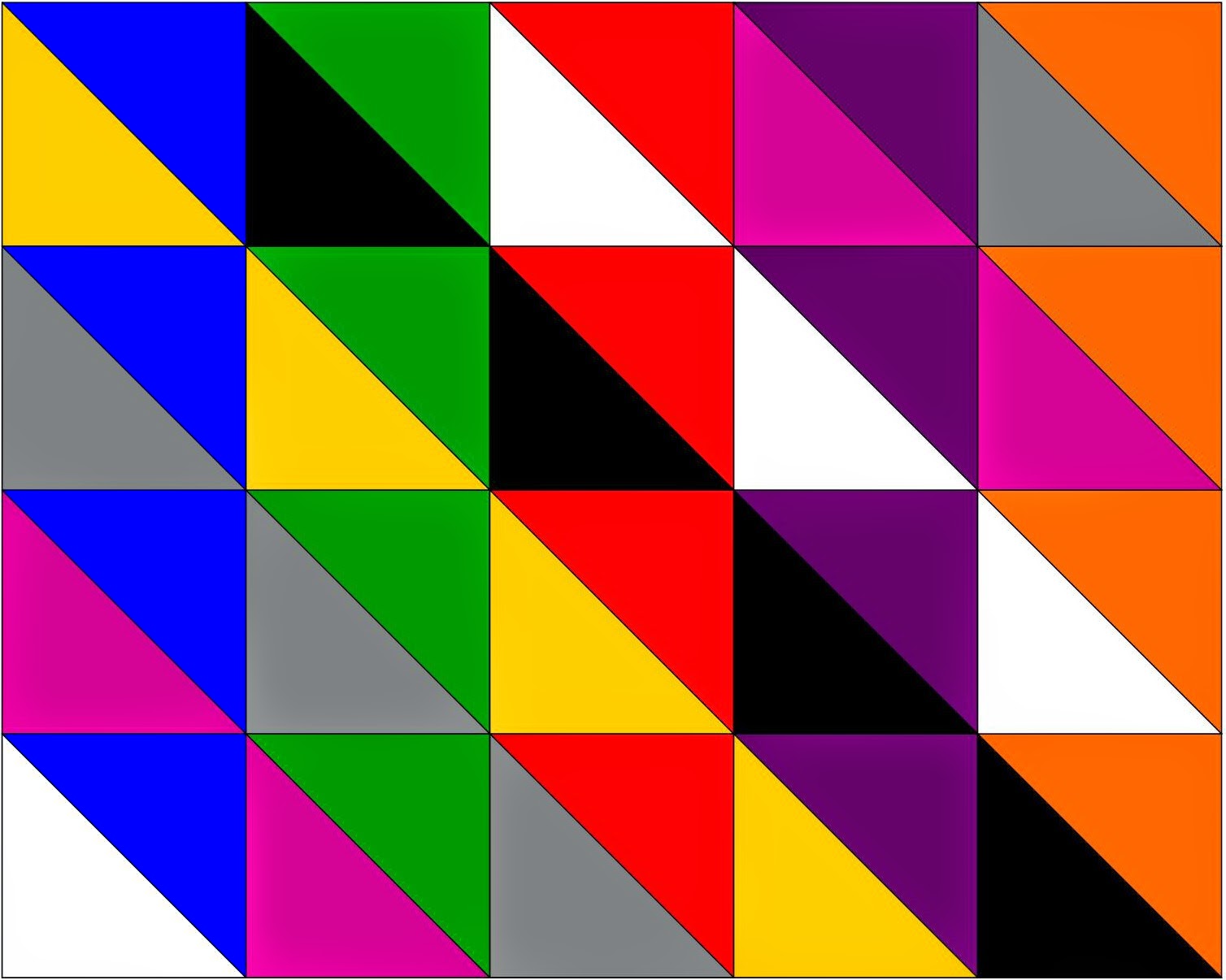Triangles in squares have long fascinated mathematicians, artists, and architects alike, intertwining geometry with creativity. This captivating topic not only highlights the beauty of mathematical relationships but also opens discussions on practical applications in various fields. In this comprehensive article, we will explore the intricate connections between triangles and squares, their properties, and their significance in both theoretical and applied contexts.
Understanding the fundamental aspects of triangles in squares can enhance our appreciation for geometry. This article delves into the essential characteristics of these shapes, their historical significance, and their modern uses. From basic geometry principles to advanced applications in design and architecture, we aim to provide a thorough examination of this intriguing subject.
As we embark on this journey through the world of triangles in squares, we will cover a variety of topics, including definitions, properties, and real-life examples. Whether you are a mathematics enthusiast, a design professional, or simply curious about geometry, this article will provide valuable insights and knowledge.
Table of Contents
- Introduction
- Definitions of Triangles and Squares
- Properties of Triangles in Squares
- Historical Significance of Triangles in Squares
- Applications in Architecture and Design
- Mathematical Concepts Behind Triangles in Squares
- Visual Representations and Art
- Conclusion
Definitions of Triangles and Squares
To grasp the concept of triangles in squares, we must first understand the fundamental definitions of these shapes:
- Triangle: A triangle is a polygon with three edges and three vertices. The sum of the interior angles of a triangle is always 180 degrees.
- Square: A square is a regular quadrilateral, meaning all four sides are equal in length, and each angle measures 90 degrees.
When we explore the combination of these two shapes, we find various configurations that create unique geometric relationships.
Properties of Triangles in Squares
Triangles within squares exhibit several interesting properties that contribute to their mathematical significance:
- Area Calculation: The area of a triangle inscribed in a square can be easily calculated using the formula for the area of a triangle, A = 1/2 * base * height.
- Symmetry: Triangles in squares often display symmetrical properties, which can be visually appealing and useful in design.
- Proportional Relationships: The dimensions of a triangle can be expressed in relation to the sides of the square, leading to various proportional relationships.
Types of Triangles in Squares
There are several types of triangles that can be formed within squares, including:
- Right Triangles: These triangles have one angle measuring 90 degrees, making them particularly prominent in square configurations.
- Equilateral Triangles: With all sides equal, these triangles can fit perfectly within certain squares, demonstrating unique geometric properties.
- Isosceles Triangles: These triangles have two sides of equal length, often aligning with the sides of squares to create striking visual effects.
Historical Significance of Triangles in Squares
The relationship between triangles and squares has been explored throughout history, with notable contributions from various cultures:
- Ancient Egypt: The Egyptians utilized triangular shapes in their architectural designs, often integrating them within square structures.
- Greek Mathematics: Mathematicians like Euclid and Pythagoras studied the properties of triangles and squares, laying the groundwork for modern geometry.
- Islamic Art: The use of geometric patterns in Islamic art often features intricate combinations of triangles and squares, showcasing the aesthetic appeal of these shapes.
Applications in Architecture and Design
Triangles in squares are not only of theoretical interest but also have practical applications in various fields:
- Architecture: Many architects incorporate triangles and squares into their designs for structural stability and aesthetic appeal.
- Graphic Design: Designers often use triangular elements within square layouts to create visual interest and balance.
- Urban Planning: The arrangement of buildings and public spaces often involves triangular and square shapes, enhancing functionality and beauty.
Mathematical Concepts Behind Triangles in Squares
Understanding the mathematical concepts related to triangles in squares can deepen our appreciation for their properties:
- Geometric Proofs: Various proofs involve triangles and squares, showcasing their interrelated properties.
- Trigonometry: The study of angles and side lengths within triangles can be applied to squares, providing practical tools for solving geometric problems.
- Coordinate Geometry: The use of coordinate systems allows for precise calculations involving triangles and squares, facilitating complex designs.
Visual Representations and Art
The interplay of triangles and squares can be beautifully represented through art and design:
- Geometric Art: Artists often explore the relationship between these shapes, creating visually striking pieces that celebrate their mathematical harmony.
- Architectural Designs: Many modern buildings feature triangular and square elements, emphasizing their geometric beauty.
- Digital Design: Graphic designers frequently utilize these shapes in logos and branding to create memorable visuals.
Conclusion
In summary, triangles in squares represent a fascinating intersection of geometry, art, and practical applications. Understanding their properties and significance allows us to appreciate the beauty and complexity of these shapes. Whether in mathematics, architecture, or design, the relationship between triangles and squares continues to inspire and captivate.
We encourage readers to explore this topic further, share their thoughts in the comments, and discover more articles on related subjects. Your insights contribute to a richer understanding of geometry and its applications!
References
- Euclid. (300 BC). Elements.
- Pythagoras. (c. 570–495 BC). The Pythagorean Theorem.
- Smith, D. E. (1958). History of Mathematics.
- Heath, T. L. (1921). A History of Greek Mathematics.
Article Recommendations
- Nakoa Wolf Manakauapo Namakaeha Momoa
- Dorgi
- Don Trump Je Ex Wife
- Bob Evans
- How Old Is Brielle From Ellen
- Good Morning Quote For A Friend
- The Prince Of Denmark
- Nikocado Avocado Fit
- Jerry Lorenzo Dad
- Larenz Tate Diet



